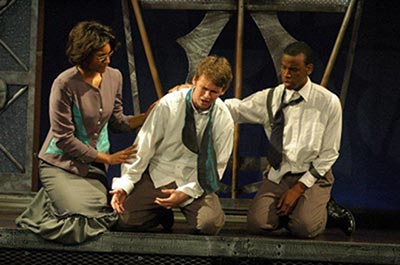Hobbies
Literature:
Until my sophomore year of high school, I played a lot of sports and rarely sat around long enough to read. That all changed one night when I stumbled across a Web site of Beat poetry and read Allen Ginsberg's "Howl" for the first time. I had something like an auditory vision, as I stayed up until the very early hours of the morning, reading it over and over again. I learned that night what poetry could be. From then on I couldn't get enough, although my poetic tastes have changed dramatically over the last four years. My favorite poets generally belong to a more formal school of verse:
- Wallace Stevens (esp. "The Idea of Order at Key West")
- Ezra Pound (esp. "The River-Merchant's Wife: A Letter")
- Hart Crane (esp. "At Melville's Tomb")
- W.H. Auden (esp. "In Memory of W.B. Yeats")
- Theodore Roethke (esp. "The Waking")
- Philip Larkin (esp. "Church Going")
- Robert Lowell (esp. "Skunk Hour")
Through my literature courses at UF, I have read all of Dante Alighieri's The Divine Comedy and all but three works in Shakespeare's canon, including all of his sonnets. Julius Caesar, Macbeth and Hamlet will always be my favorite Shakespearean plays.
I do stray from verse at times to read a good work of prose. Although right now I prefer poetry to fiction, I believe that ultimately my writing abilities are more suited for prose. I have taken to heart many of the lessons in Hemingway's work, going as far as to quote him any chance I get. Other novelists I enjoy reading are Saul Bellow, Cormac McCarthy, Robert Graves, F. Scott Fitzgerald and Gabriel Garcia Marquez.
You can click here to listen to some of my original poetry.
Drama:

I have been acting in the theater on and off since I was 12, when I went to a magnet arts middle school. In high school, I played the lead role in the spring 2006 production of Happy Daze and a series of other minor roles. I also performed in the Orlando Shakespeare Festival's Young Company productions of Taming of the Shrew and Richard III during the summers.
Since going off to college, I have not been involved in the theater, mostly due to the onset of stage fright. Hopefully I will overcome the fright to act another day. Every once in a while I catch myself in front of the mirror reciting monologues from Macbeth, always trying to emulate Ian McKellen's version of the Scottish king.
Western Films:
After I got Netflix a couple years ago, I became addicted to movies. I have seen about three-fourths of the movies on the American Film Institute's list of 100 greatest films. Visit my blog, Film Frenzy, for reviews of recently released films. I have a special affinity for Woody Allen's romantic comedies, Martin Scorsese's gritty crime dramas and any movie featuring Marlon Brando. However, of all the genres of film I have seen, my favorite remains the Western, especially Sergio Leone's Spaghetti Western. I have written up a short description of the director and his work:
Sergio Leone
Sergio Leone defined America's western frontier in the mid-19th century as a place "where life has no value." In the 1960s, Leone revived the Western film in Italy with his new sub-genre of Spaghetti Westerns, which featured more violence than classic Hollywood Westerns. Leone gave his characters selfish motives: Clint Eastwood's "Blondie" in The Good, the Bad and the Ugly competes with a bandit and a hired assassin to find a cache of stolen Union gold.
Leone used many stylistic references to classic Western films, while characteristically juxtaposing "extreme close-up shots with lengthy long shots." His films were low-budget productions, often shot in the Spanish deserts meant to look like the landscape of the Southwestern United States. For the background of his films, Leone hired Italian composer Ennio Morricone to produce the now-famous musical scores.
